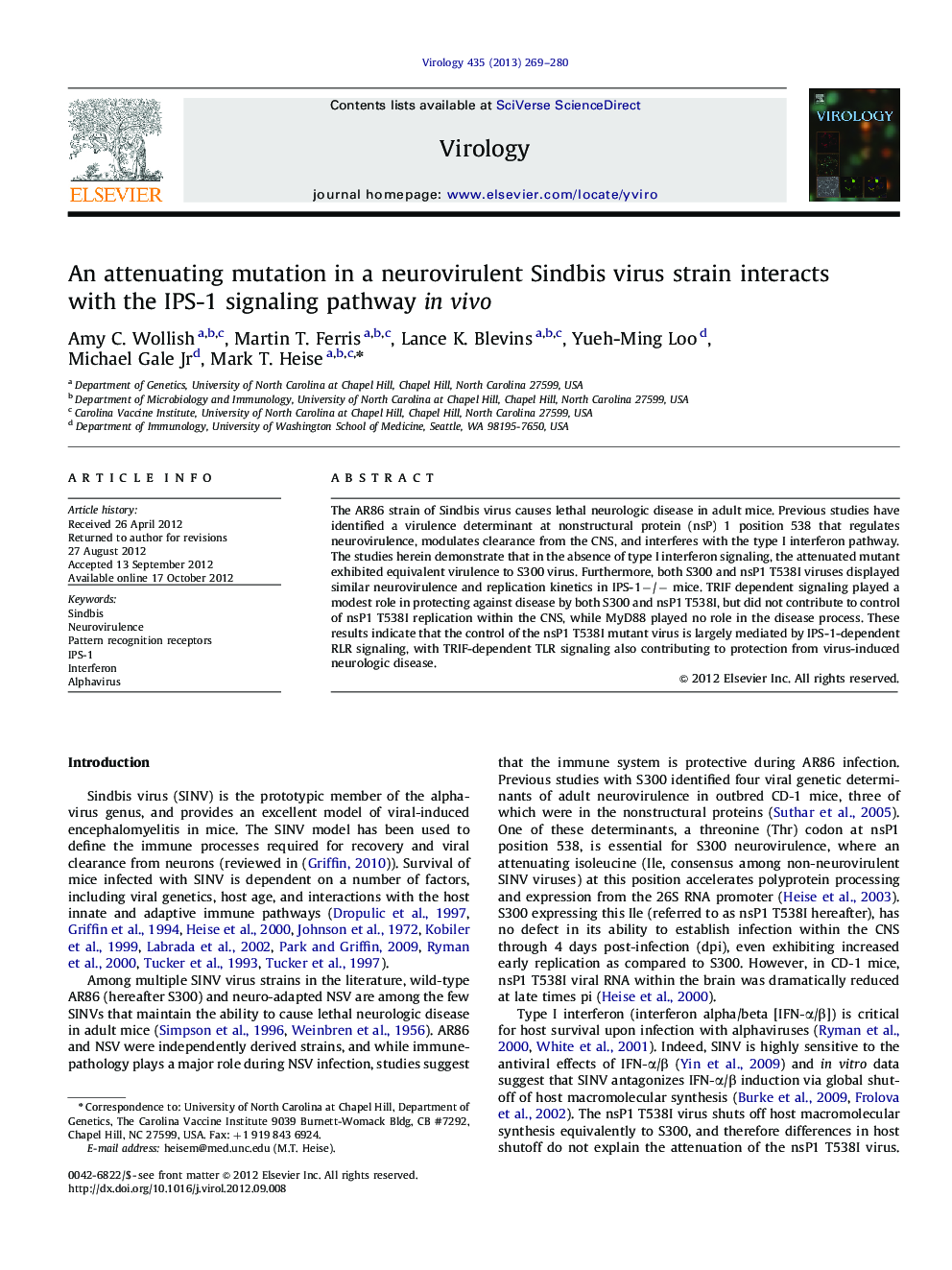| Article ID | Journal | Published Year | Pages | File Type |
|---|---|---|---|---|
| 3424174 | Virology | 2013 | 12 Pages |
The AR86 strain of Sindbis virus causes lethal neurologic disease in adult mice. Previous studies have identified a virulence determinant at nonstructural protein (nsP) 1 position 538 that regulates neurovirulence, modulates clearance from the CNS, and interferes with the type I interferon pathway. The studies herein demonstrate that in the absence of type I interferon signaling, the attenuated mutant exhibited equivalent virulence to S300 virus. Furthermore, both S300 and nsP1 T538I viruses displayed similar neurovirulence and replication kinetics in IPS-1−/− mice. TRIF dependent signaling played a modest role in protecting against disease by both S300 and nsP1 T538I, but did not contribute to control of nsP1 T538I replication within the CNS, while MyD88 played no role in the disease process. These results indicate that the control of the nsP1 T538I mutant virus is largely mediated by IPS-1-dependent RLR signaling, with TRIF-dependent TLR signaling also contributing to protection from virus-induced neurologic disease.
► IPS-1 is essential for protection and control of an attenuated Sindbis virus. ► TRIF plays a modest role in protection from Sindbis-induced neurologic disease. ► MyD88 does not regulate Sindbis neurovirulence.
